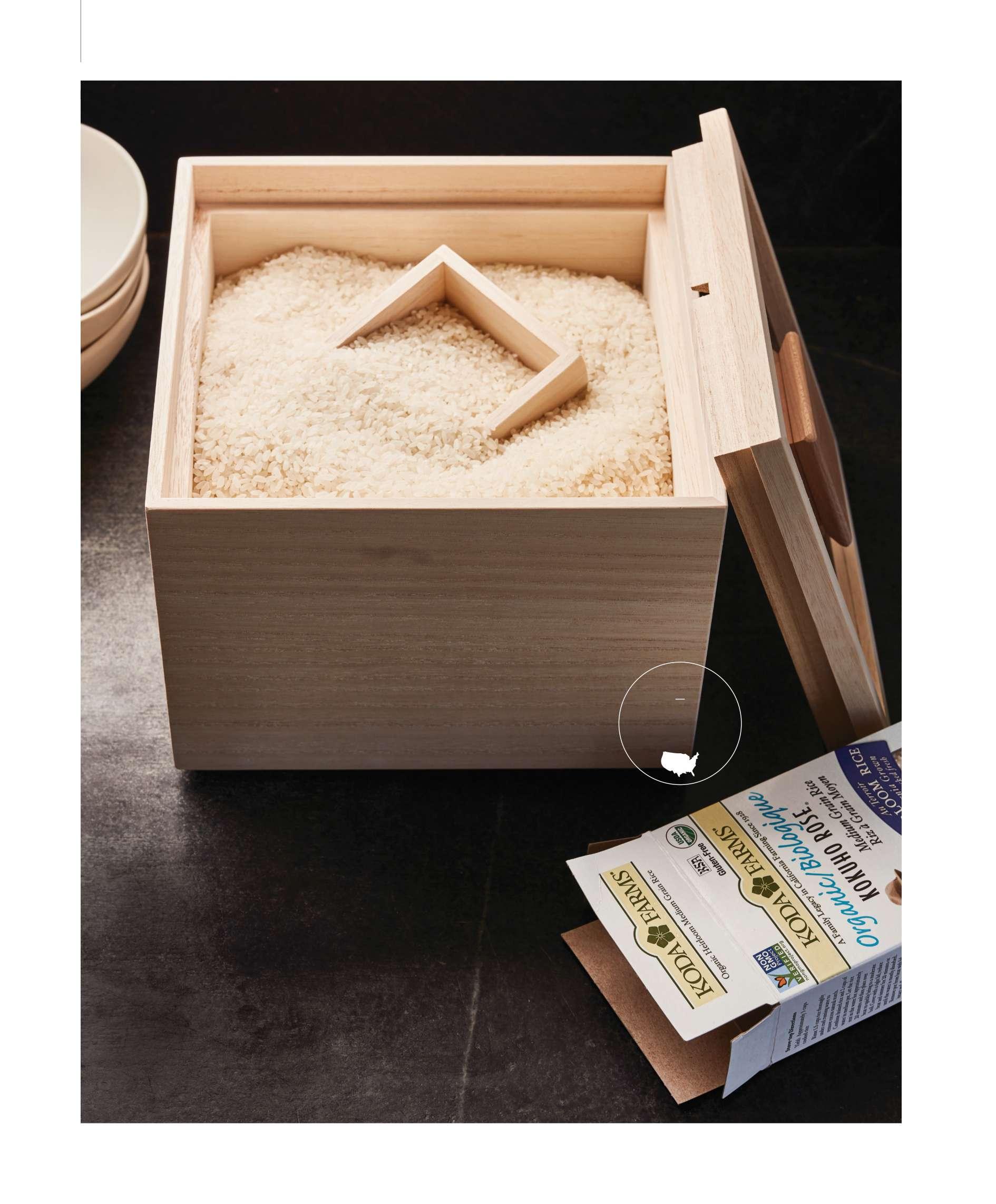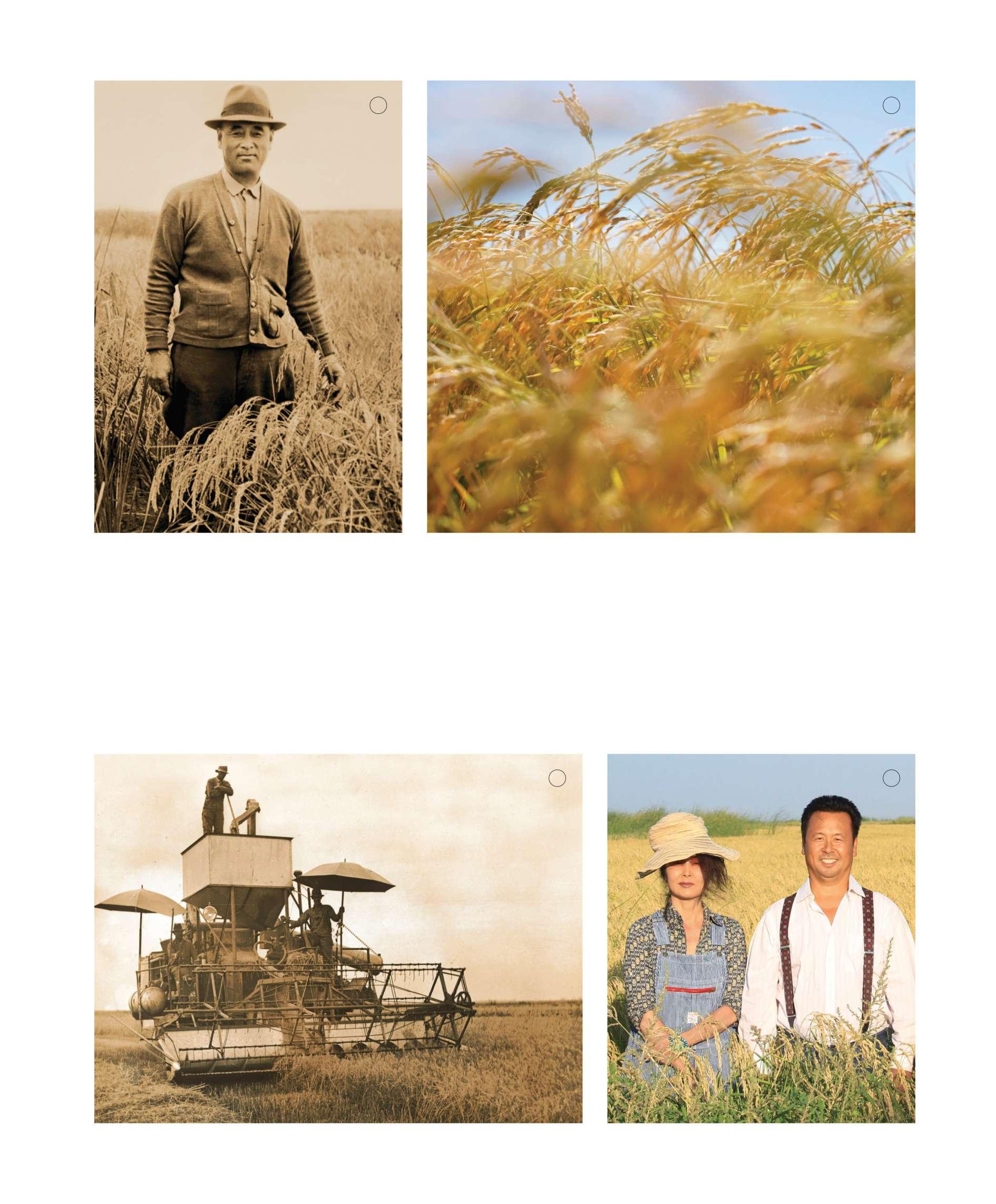
2 minute read
The century-old story of a family’s Asian-style, California- grown rice.
GOOD LIVING
White and translucent when raw, Kokuho Rose grains cook up moist, tender, and just clingy enough to grab easily with chopsticks. THE DETAILS: Organic Kokuho Rose, from $6 for 1 lb., kodafarms.com. Masuda Kiribako storage canister (tra- ditional box made of naturally insect- and mold-resistant pau- lownia wood), $150, shoptenzo.com.
Advertisement
Amazing Grains
KO DA FARM S, South Dos Palos, California For generations of Asian Americans, a hefty sack of Kokuho Rose rice has represented home. Developed in the 1950s at Koda Farms in the San Joaquin Valley, this iconic varietal of medium-grain, Japonica-style rice became a staple for many Japanese, Chinese, and Korean immigrants searching for the familiar stickiness and texture they found lacking in the typical long-grain types at U.S. supermarkets. Today, more than a century since its founding by Keisaburo Koda, a native of Japan’s Fukushima prefecture, Koda remains California’s oldest family-owned-and-operated rice farm and mill—and still grows some of the most delicious kernels in the country. Siblings Robin Koda and Ross Koda, grandchildren of the founder, run the company today with a close eye on its legacy. They plant heirloom Kokuho Rose seeds, which take longer to mature and are more difficult to harvest than modern counterparts due to their taller height. The payoff, says Robin, is a faintly floral, almost sweet flavor: “It hasn’t had everything tasty bred out of it.” But buyer beware—look-alike brands (there are several) are no match. “We now put our grandfather’s photo on our table-rice packaging to distinguish it,” says Robin. “We want to live up to his standards.” —Catherine Hong
M A R T H A S T E W A R T
A m e r i c a n M a d e
ST YLIN G BY LO RNA AR AGO N (LEF T ); CO U RTESY O F R&R KO DA (1, 3); LU K E AMARU ( 2); MASA BABA (4)
1 2

Best in the Field
1. THE FOUNDER Keisaburo Koda in his California rice fields in the 1930s, before he and his family were forced to relocate to internment camps during World War II. At that time, the family’s mill and equipment and most of their land were liquidated, forcing the Kodas to start all over again when they were finally released in 1945. 2. THE CROP The farm’s heirloom Kokuho Rose is ready to be harvested in September. The family operates their own seed nursery, where they carefully select panicles to plant to ensure quality. It takes about five years, from sowing to bagging, for the rice to reach customers. 3. THE PROCESS In the ’30s, Koda farmworkers operated advanced equipment of that time: a propane-fueled combine. 4. THE STEWARDS Siblings and co-owners Robin and Ross Koda produce white, brown, and short-grain sweet types, as well as rice flour. Their products are praised by chefs such as Brooks Headley of Superiority Burger, in New York City, and Minh Phan of Phenakite, in Los Angeles; and cookbook authors including Mark Bittman and Sonoko Sakai.
3 4










